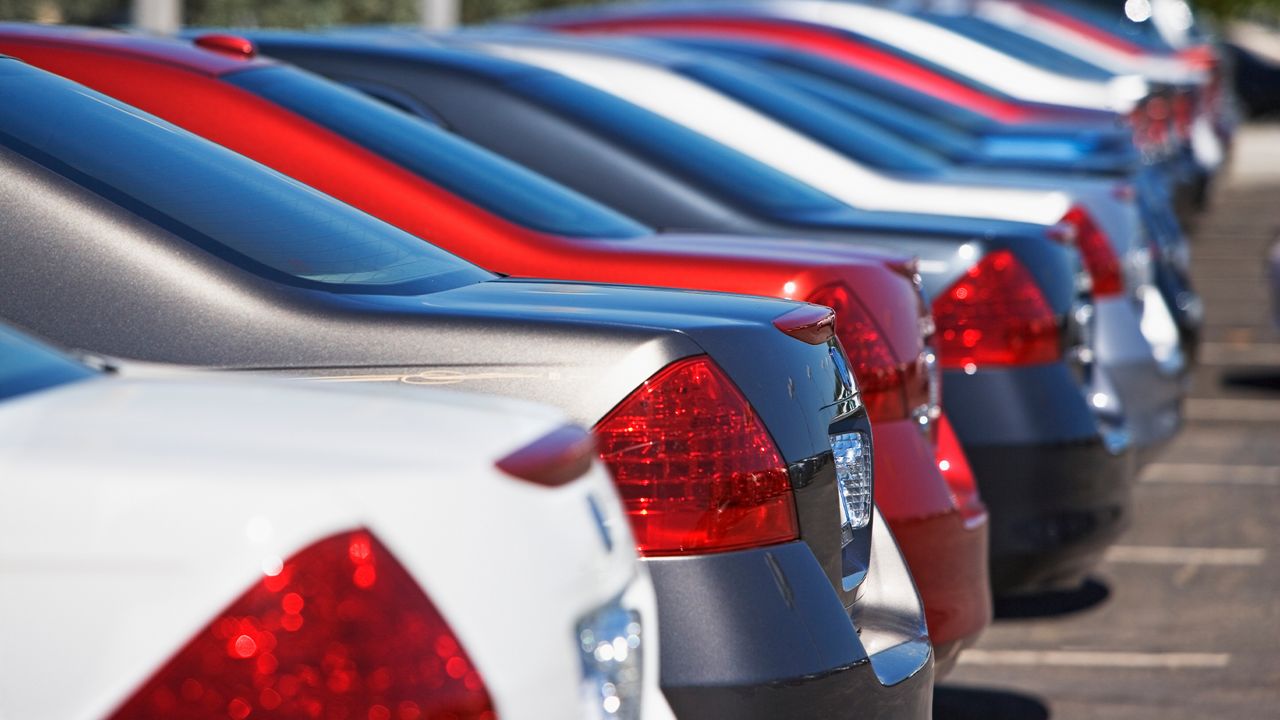If you’ve been in the market for a vehicle this year, chances are you haven’t been able to find what you want. And if you did, you paid a lot more for it. Fueled by post-COVID consumer optimism, pent-up demand and stimulus money, these past few months have seen a frenzy of demand for both new and used vehicles as consumers flocked to auto dealerships, driving prices to all-time highs.
The second half of the year isn’t likely to be much better, according to a new analysis from Cox Automotive. With computer chip shortages continuing to impact auto production, “supply challenges are not going away quickly,” said Cox Automotive Chief Economist Jonathan Smoke.
That’s especially true for new cars. While dealers will have slightly more vehicles to sell in the coming months, Smoke said, they are increasingly constrained by a lack of staff to sell and service them. According to Cox’s midyear review of the auto market, 65% of franchised car dealers want to grow their ranks this year to meet demand, but 72% say that finding and hiring the right employees is currently a challenge.
Characterizing the new car market as a green spring followed by a summer drought, Cox Senior Economist Charlie Chesbrough said, “We expect second half sales to be constrained. Even though there’s strong interest from consumers, they can’t buy what isn’t there.”
New car supply is down 61% from a year ago, he added.
“This concern about the supply situation can not be overstated as we are in untested territory for the market,” he said. “How low supply can go and how low can it go before sales are impacted will be seen over the next few months.”
Right now, Cox forecasts total new car sales of 16.5 million for the year — a 13.8% increase over the 14.5 million sold in 2020.
All the macroeconomic indicators are pointing in the right direction for strong car sales. Gross Domestic Product increased 10.8% in the second quarter and unemployment fell to 5.6%. But automotive supply issues could suppress what could otherwise be a continuing fever pitch.
Some automakers have more supply than others, as do some types of vehicles. Toyota, Lexus, Chevrolet, GMC and Kia all have less than the national average of 33 days of supply, whereas Alfa Romeo, Fiat, Genesis, Infiniti and Mitsubishi have more supply than the national average.
While minivans, full-size SUVs and luxury full-size SUVs are in tight supply, high-end luxury cars, entry-level luxury cars and full-size cars are more readily available.
It’s possible, Chesbrough said, that less popular brands and models could see major sales gains this year simply because they have more vehicles available. The most popular nameplates with the most availability right now are the Ram 1500, Hyundai Elantra, Volkswagen Tiguan, Jeep Grand Cherokee and Honda Pilot, according to Cox. The most popular models with the least availability are the Toyota Corolla, Subaru Forester, Toyota RAV4, Ford Bronco Sport and Toyota Tacoma 4WD.
Because there is so little supply, automakers are not aggressively incentivizing purchases, and sticker prices are rising faster than usual. The average transaction price for a new vehicle now exceeds $41,000 — a 5.5% increase compared with the first few months of 2020.
The high prices have pushed the vehicle affordability index to “concerning levels,” the Cox report found. It now takes an average of 36 weeks of income to purchase a new light vehicle, compared with 32 weeks a year earlier.
Used cars are also continuing their upward trajectory, though the pace is slowing from record highs in May when some used cars were actually increasing in value. In June 2021, the average list price for a used vehicle with 67,000 miles is $24,414 compared with $19,646 a year earlier.
“Prices are elevated, but they are near their peak,” said Cox Automotive Industry Intelligence Analyst Kayla Reynolds. “These high prices are keeping some buyers away, but the used market is benefiting from some buyers not being able to find what they want in the new market.”
Where sales and prices go for the next few months is, like so many other things in this unusual economic recovery, difficult to predict.
“The spring frenzy is over, but demand remains strong as the macro environment remains very supportive of vehicle demand,” Smoke said. “Once we navigate the summer with even tighter new inventory, the industry should be seeing several years of predictable growth.”



